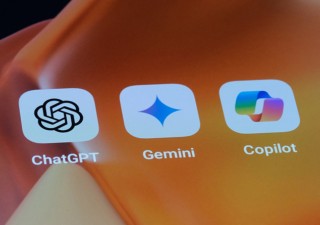A landmark ruling from the Beijing Internet Court carries significant implications for the future of AI and IP in China, as it indicates that the Chinese courts would be willing to recognize the copyrightability of AI-generated works in appropriate cases. Loke-Khoon Tan, James Lau and Harrods Wong explain.
Artificial intelligence (AI) has revolutionized various aspects of our lives. Specifically, the use of generative AI has transformed the way we create artwork and other forms of digital content. However, this technological advancement has also raised significant intellectual property concerns. In China, the intersection of AI and IP has become a focal point for legal deliberation. Recently, a groundbreaking court judgment marked a milestone in Chinese IP law by recognizing copyright protection for AI-generated images. This article provides a summary of the court ruling and discusses its implications.
The landmark court ruling
In November 2023, the Beijing Internet Court in China handed down a groundbreaking ruling in a copyright infringement case involving an AI-generated image. The judgment answers the important questions of (1) whether AI-generated works are protectable by copyright, and (2) if yes, who owns the copyright.
The plaintiff used Stable Diffusion (a text-to-image generative AI model) to generate a picture of a young woman (the Picture) by inputting various prompts (including negative prompts) and adjusting the parameters. The plaintiff posted the Picture on the social media platform Xiaohungshu using the hashtags #AI, #AI Illustration (AI插画) and #AI Drawing (AI绘画). Later, the plaintiff discovered that the defendant used and published the Picture on another platform without permission and brought a claim against the defendant for copyright infringement.
The Beijing Internet Court examined the facts of the case and rendered a detailed ruling. First, the court considered the meaning of “works” under the Copyright Law of the People's Republic of China, which provides that copyrightable works must be original and reflect intellectual achievement, among other things.
In terms of intellectual achievement, the court noted that the plaintiff did not merely use existing pictures returned by search engines or rearrange pre-designed elements when it created the Picture. Instead, the plaintiff designed how the woman in the Picture should look, and entered relevant prompts to generate an image that matched expectations. The plaintiff inputted detailed prompts such as “Japan idol”, “cool pose”, “viewing at camera” and “film grain”, and then further adjusted the prompts based on the preliminary images generated by Stable Diffusion before finally completing the Picture in question. These actions demonstrated the plaintiff’s intellectual input.
Regarding the concept of originality, the court noted that this generally means the work should be independently completed by the author, and that it should reflect the author’s subjective expression. In general, if the same work can be created by different people following a fixed set of procedures, formula or structure, then it cannot be original. In the context of AI-generated images, the determination of originality should be made on a case-by-case basis. The more specific the prompts are (e.g., by inputting specific descriptions of the pictorial elements and the overall composition of the image), the more the work would show its author’s original expression of ideas. In this case, although the plaintiff did not physically draw the Picture using pen and paper, the plaintiff designed the different elements of the image by inputting and fine-tuning the prompts and adjusting the parameter settings. Doing so demonstrated the plaintiff’s subjective aesthetic choice and original judgment. The court, therefore, held that the Picture is protected by copyright as an original work.
Consequently, the court categorized the Picture as a “work of fine arts” in accordance with Article 3 of the Copyright Law, recognizing the artistic nature of AI-generated images and affirming their place within the realm of copyrightable works.
On the issue of copyright ownership, the court noted that (1) the Copyright Law provides that copyright shall be owned by the author of the work (which can be a natural person, legal person or an unincorporated association), and an AI model cannot be an author (and hence copyright owner) because it is not a natural person, legal person or an unincorporated association, (2) the designer of Stable Diffusion only created the AI model, but was not involved in the intellectual input leading to the creation of the Picture, and (3) the license for using Stable Diffusion expressly states that the designer of Stable Diffusion does not claim rights in any output content. Considering the above, and given the plaintiff’s significant role in the creation process, the plaintiff is the rightful author and copyright owner of the Picture.
Implications of the judgment
The court’s ruling in this case carries significant implications for the future of AI and IP in China, as it indicates that the Chinese courts would be willing to recognize the copyrightability of AI-generated works in appropriate cases.
Whether or not an AI-generated work is copyrightable will still need to be determined on a case-by-case basis, taking into consideration the factual circumstances of each case. Nonetheless, the court’s detailed analysis in this case provides us with insight into the factors that come into play when determining this issue. For example, in this case, the court discussed in detail the various positive and negative prompts inputted by the plaintiff, as well as the subsequent fine-tuning and adjustments made by the plaintiff to the prompts and the parameter settings when creating the Picture. In a different case scenario where the user's input is more limited, the court could have come to a different conclusion. The court’s analysis on the concepts of intellectual achievement and originality provides helpful guidance for future disputes involving AI-generated content in China.
While this case brings clarity to the proposition that AI-generated content may be copyrightable in China, there are still legal uncertainties surrounding AI and IP, including on the possible liability of AI service providers for copyright infringement. On this issue, in a more recent case decided in February 2024, the Guangzhou Internet Court ruled that an AI company has infringed on the copyright of the iconic Japanese superhero, Ultraman, through unauthorized copying and adaptation, as some images generated by the company’s AI service were found to be substantially similar to the character. This case illustrates the potential liability of service providers for the output of their AI tools, and sparks discussion on their responsibilities regarding IP protection.
Looking forward
As AI technologies continue to develop and permeate our daily lives, the associated legal issues will continue to be brought into the limelight in more and more cases both in China and abroad. At the same time, governments around the world are also seeking to more formally regulate the various IP, compliance and other legal issues in the AI realm, though they may be taking different approaches and have different priorities. In China, for example, the Interim Measures on the Administration of Generative AI Servicesbecame effective in August 2023, and it imposes obligations on generative AI service providers to, among other things, ensure that training data come from lawful sources and do not infringe the IP rights of others. There is also indication that a comprehensive AI law may be proposed in China.
In this evolving era of AI, finding the delicate balance between safeguarding rights and fostering technological advancement will be crucial. It will be fascinating to see how China and other countries tackle this challenge with regard to the interests of various stakeholders as well as society as a whole, and pave the way for a future where the full potential of AI can be harnessed responsibly and beneficially for all.











